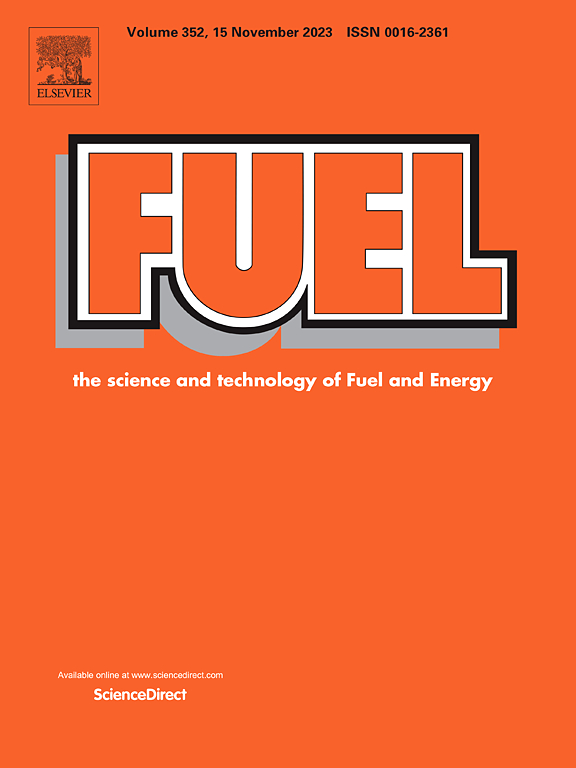Pyrite-enhanced coal spontaneous combustion: Insights from experiments and molecular simulations
IF 6.7
1区 工程技术
Q2 ENERGY & FUELS
引用次数: 0
Abstract
Pyrite is a principal factor affecting the spontaneous combustion of coal; however, the molecular-level structural evolution mechanism of pyrite-containing coal remains unclear. To investigate the mechanisms of pyrite on coal spontaneous combustion, experiments (temperature-programmed experiments, thermogravimetric-differential scanning calorimetry coupled with fourier transform infrared spectroscopy (TG-DSC-FTIR), low-temperature nitrogen adsorption, and in-situ infrared), molecular simulations (reactive force field, ReaxFF) and quantum chemical methods (density functional theory, DFT) were conducted. Experimental results showed that pyrite significantly promoted the generation of CO and CO2, reduced the activation energy of coal samples (4.4%–13%), and increased heat release (14%–46%), thus enhancing the likelihood of coal spontaneous combustion. Additionally, pyrite increased the specific surface area of the coal samples and enhanced the content of active functional groups. ReaxFF molecular dynamics (ReaxFF MD) simulations revealed that pyrite accelerated the decomposition of tar, increased oxygen consumption, and increased the potential energy of the coal–oxygen reaction, thus further promoting coal–oxygen interactions. After the Fe-S bond breaks, Fe, serve as a carrier and repeatedly interacts with the carboxyl oxygen in the benzene ring, thus facilitating the opening of the benzene ring and generating more free radicals. Bond order and interaction force analyses indicated that the presence of Fe2+ reduced the C–C bond energy on the benzene ring, which is consistent with the results of MD simulation.

求助全文
约1分钟内获得全文
求助全文
来源期刊

Fuel
工程技术-工程:化工
CiteScore
12.80
自引率
20.30%
发文量
3506
审稿时长
64 days
期刊介绍:
The exploration of energy sources remains a critical matter of study. For the past nine decades, fuel has consistently held the forefront in primary research efforts within the field of energy science. This area of investigation encompasses a wide range of subjects, with a particular emphasis on emerging concerns like environmental factors and pollution.
 求助内容:
求助内容: 应助结果提醒方式:
应助结果提醒方式:


